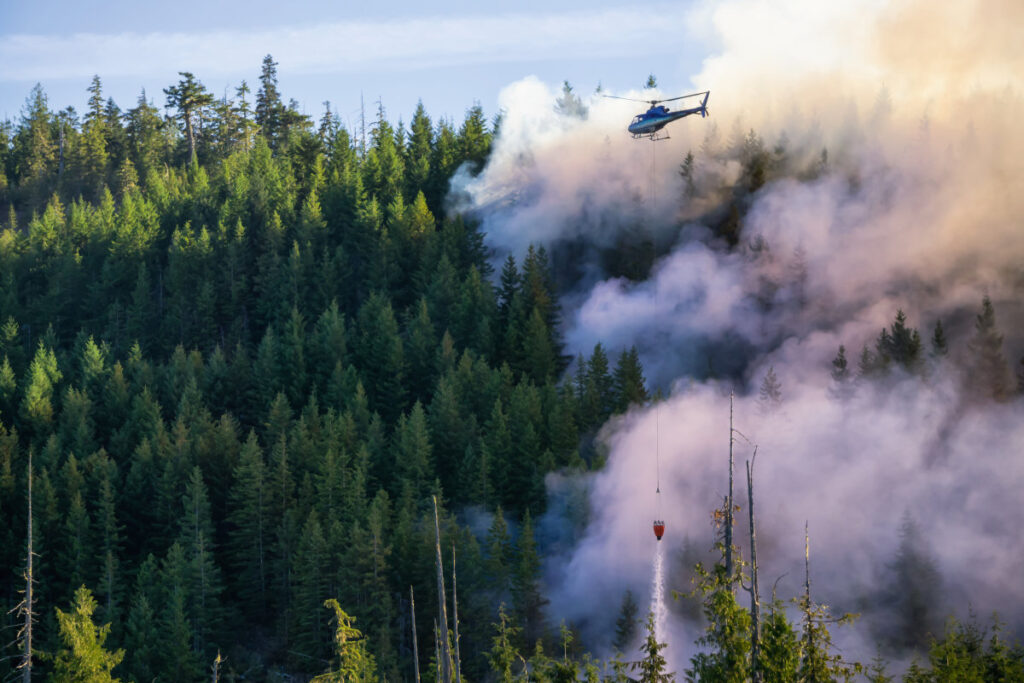[LUM#21] Heat waves in cold forests
While major fires have ravaged millions
of hectares of boreal forests in recent years, scientists are questioning how
these ecosystems will evolve under the effects of global warming. Given that
the evolution of this gigantic natural carbon sink will have repercussions
on the Earth's climate system.

Large fires are nothing new. For thousands of years, these fires have played an essential role in boreal forests, promoting tree regeneration and the nutrient cycle. But over the past decade, their size and frequency have increased. In Canada, several million hectares of boreal forest burned in the Northwest Territories in 2014, then in British Columbia in 2017 and 2018. In 2023, the country set a new record with more than 18 million hectares going up in smoke. Record fires are also ravaging the boreal forests of Siberia. During the summer of 2021, more than 18 million hectares of taiga burned (Cold forests are burning, 07/22/2021, University of Montpellier). These mega-fires are affecting the health of boreal forests throughout the Northern Hemisphere and increasing carbon dioxide emissions into the atmosphere. Scientists are seeking to anticipate how these boreal ecosystems will evolve under the effects of global warming.
Look in the terrestrial archives
"Cold forests account for one-third of the world's forests. The future of this enormous carbon reservoir, accumulated mainly in peat bogs that are thousands of years old, will have repercussions on the planet's climate balance," emphasizes Adam Ahmed Ali of the Montpellier Institute of Evolutionary Sciences (ISEM).1. The paleoecology researcher has joined the international Cold Forests network, based at the University of Quebec in Abitibi-Témiscamingue. Paleoecology allows us to look into the Earth's archives to see how, over thousands of years, the climate has influenced these ecosystems. By looking at sediments at the bottom of the great lakes of boreal Quebec, Adam Ahmed Ali and his team measured the amount of charcoal for each climate period of the Holocene. And his results —published in the journal PNAS in 2012—are counterintuitive.
"We might have expected to find large fires, especially during the Holocene climatic optimum 6,000 years ago, when the climate was warmer and drier than today (+2°C). However, they are concentrated during the 'cold and wet' period of the Holocene, i.e. around 4,000 BC, during the Neoglacial period," says the researcher. This pattern can be explained by recurring episodes of exceptional spring and summer droughts around the year 1000, during the Medieval Warm Period. The increase in the occurrence of large forest fires during this climatic warming has been recorded in various parts of Canada's boreal forest. "These data show that the processes that control the fire regime, particularly large forest fires, are complex. Does the year 2023 foreshadow conditions similar to those recorded during the medieval warming anomaly?"
The chicken and egg paradox
Many uncertainties remain before such a scenario can be confirmed. Firstly, because the speed of warming is unprecedented and "an average increase of 3 to 4°C in annual temperatures, as suggested by some predictions, has never been recorded in the sedimentary archives of the Holocene, " explains Adam Ahmed Ali. Furthermore, changes in precipitation are uncertain (Climate has determined the fire cycle, and humans have influenced the frequency of fires). Climate models are unable to predict whether boreal regions will receive more or less rainfall than today. More broadly, climatologists still have more questions than answers about the future climate of the Anthropocene era, such as the frequency and magnitude of extreme events, or changes in ocean currents, which are powerful climate regulators.
Another interesting fact to consider, according to the researcher, is the increase in flammable conifers such as black spruce (Picea mariana) and jack pine (Pinus banksiana) during the cold Neoglacial period (An 8,500-year history of climate-fire-vegetation interactions in the black spruce and moss bioclimatic domain of the eastern Maritimes). Did the climate change the vegetation, which in turn changed the fire regime, or did the fire regime change the vegetation? "It's the famous chicken-and-egg paradox, " summarizes Adam Ahmed Ali. The nature of tree species is indeed a crucial issue in understanding the evolution of fires. In particular, the proportion of hardwoods that make up the boreal forest, as they are less susceptible to fire. However, global warming will allow deciduous trees to migrate from temperate forests to boreal forests, which should reduce the number of forest fires. While these factors make it difficult to predict the long-term scale of fires, scientists unanimously agree that large fires will become more frequent in the coming decades.
Find UM podcasts now available on your favorite platform (Spotify, Deezer, Apple Podcasts, Amazon Music, etc.).
- Isem (CNRS, UM, IRD)
↩︎